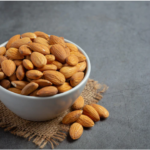Introduction
What’s The Secret To Ranking High In SEO? There needs to be more clarity and misinformation out there about SEO. People always ask me, “How do I get higher in Google?” But the truth is, there’s no simple answer. There’s a secret to ranking high in search engine optimization that most people don’t know: it all comes down to quality content. In this post, I’ll explain exactly how you can improve your site so that your posts rise above others on SERPs (search engine results pages).
Adding value
This is the most important step in ranking well on Google. The first thing you have to do is understand what your readers want. There are two kinds of people: those who only want a specific piece of information and those who want to know everything about something.
The first kind will likely be satisfied with a single article, while the second type won’t stop reading until they’ve consumed every word on that topic they can find (or until their boss yells at them). Which one are you? If you need more clarification, try testing both types of content and see which works better for your audience and situation.
Creating content
- Create useful content.
- Create entertaining content.
- Create relevant, accurate, well-written and error-free content regularly.
Rich content
Rich content is a term you’ll hear a lot when talking about SEO Davao Company. Rich content is any content that includes images, videos, and other media. It also includes things like infographics and interactive elements like quizzes or polls.
Rich content is more engaging than plain text because it gives people something to see and interact with, rather than just reading words on a screen.
Because rich content attracts engagement from users (and Google), it’s more likely to rank higher in search engines.
Rich content can also be used as linkable assets for your website (more on later).
Keyword research
- Keyword research is an essential step in the SEO Davao Company process.
- Keywords are words or phrases people use to search for products and services online, such as “car insurance” or “best hair straightener.”
- Google AdWords Keyword Planner is a tool that allows you to find popular keywords related to your business or website. It’s free, easy to use, and provides helpful suggestions based on what others are searching for. You can also find relevant keywords using Google Trends to see which terms are trending within a specific time frame (like last year).
Producing lots of content
The secret to ranking high in SEO Davao Company is producing lots of content. If you create one piece of content, it will not rank well. It would be best if you created a lot of different types of content that are relevant to your audience and unique (not duplicated).
Optimizing media
Optimizing media is a great way to improve your SEO. Here are some tips:
- Use alt tags in images. Alt tags are important because they tell search engines what the image is about and can also help with accessibility for people with disabilities.
- Use captions on videos and GIFs of text that you add to your sites, like blog posts or social media posts. You can use these as snippets in your meta descriptions too!
- Embed videos from YouTube or Vimeo into web pages using their embed codes (the code you see when you hover over a video thumbnail), which have been around since 2005! It’s important to use these types of tools because even though we still have them today, there may only sometimes be embed codes available in the future due to changes made by Google/Youtube/Vimeo itself (or other sites). So if someone wants access now–don’t wait until later.
Optimizing title tags and meta descriptions
A title tag is the name of your page that shows up in a browser’s tab bar, bookmark list, or search results. It’s typically just a few words long and tells users about your site. Meta descriptions are short summaries of what your page is about; they appear under each post on a blog.
There are two main reasons why you should optimize these tags:
- They help with SEO because search engines can use them to describe specific keywords related to your content (and thus boost its ranking). For example, if you’re writing about making cupcakes for kids’ birthdays, your title tag might say, “How to Make Cupcakes for Kids’ Birthdays.” The meta description could say, “This recipe will teach you how to make delicious cupcakes for any occasion.”
- They serve as hooks encouraging people who see them on Google or other search engines—or stumble upon them elsewhere on social media—to click through and read more.
Internal linking
Linking to your content is one of the best ways to boost SEO for your site. When you link within your website, it helps Google know what’s important and relevant for users on that page.
It’s also a good idea to use anchor text in your internal links (where you write something like “click here” or “read more” in the link). This provides a visual cue that tells people where they’re headed and helps search engines identify what keywords are frequently used on those pages.
When using anchor text in internal links, remember to do it sparingly! Suppose too many instances of one phrase are repeated throughout an entire website or just one section. In that case, Google may think that particular term isn’t very important—and thus won’t rank them highly when someone searches for that keyword!
Improving site speed
Site speed is important in SEO Davao Company, as Google indicates it’s a ranking factor. Google uses site speed as one of its ranking factors for mobile search results because “users are more likely to leave your site if it takes too long to load.”
In fact, according to Ahrefs, the average loading time of websites ranking on page 1 is 2 seconds, while the average loading time of the top 10 sites is 3.57 seconds. This means that not only does speed matter but also how fast your site loads can help you rank higher in search engine results pages (SERPs).
The key is producing valuable, useful, and entertaining content people want to link to.
The key is producing valuable, useful, and entertaining content people want to link to.
People don’t link to boring content. They will only link if they find the content valuable.
When you create valuable, useful and entertaining content that people want to share and link with others…you get organic traffic from search engines like Google!
Conclusion
This post has given you a better understanding of how to rank high in search engines. If you want more information on the subject, check out our other blog posts on SEO and read up on what others are doing to succeed.


